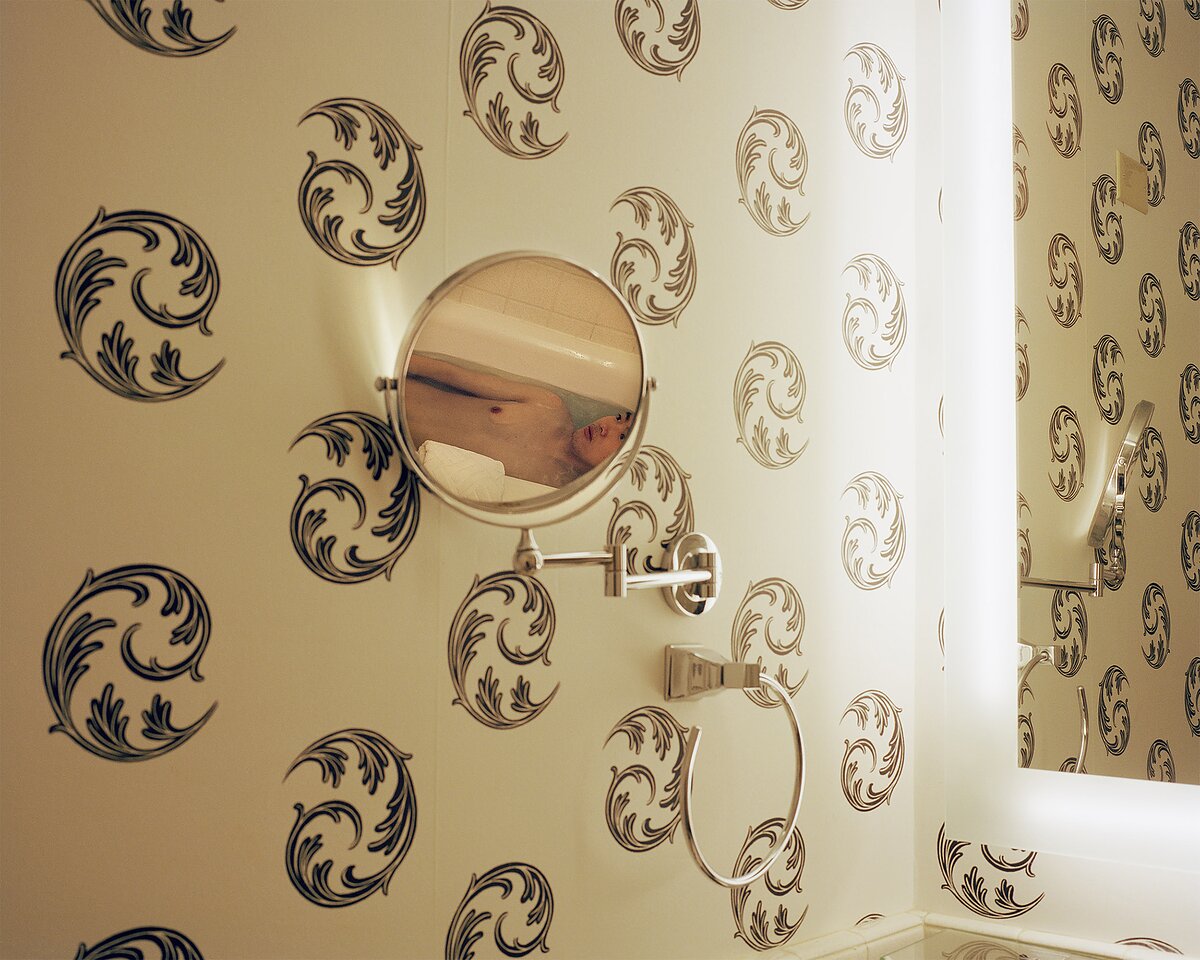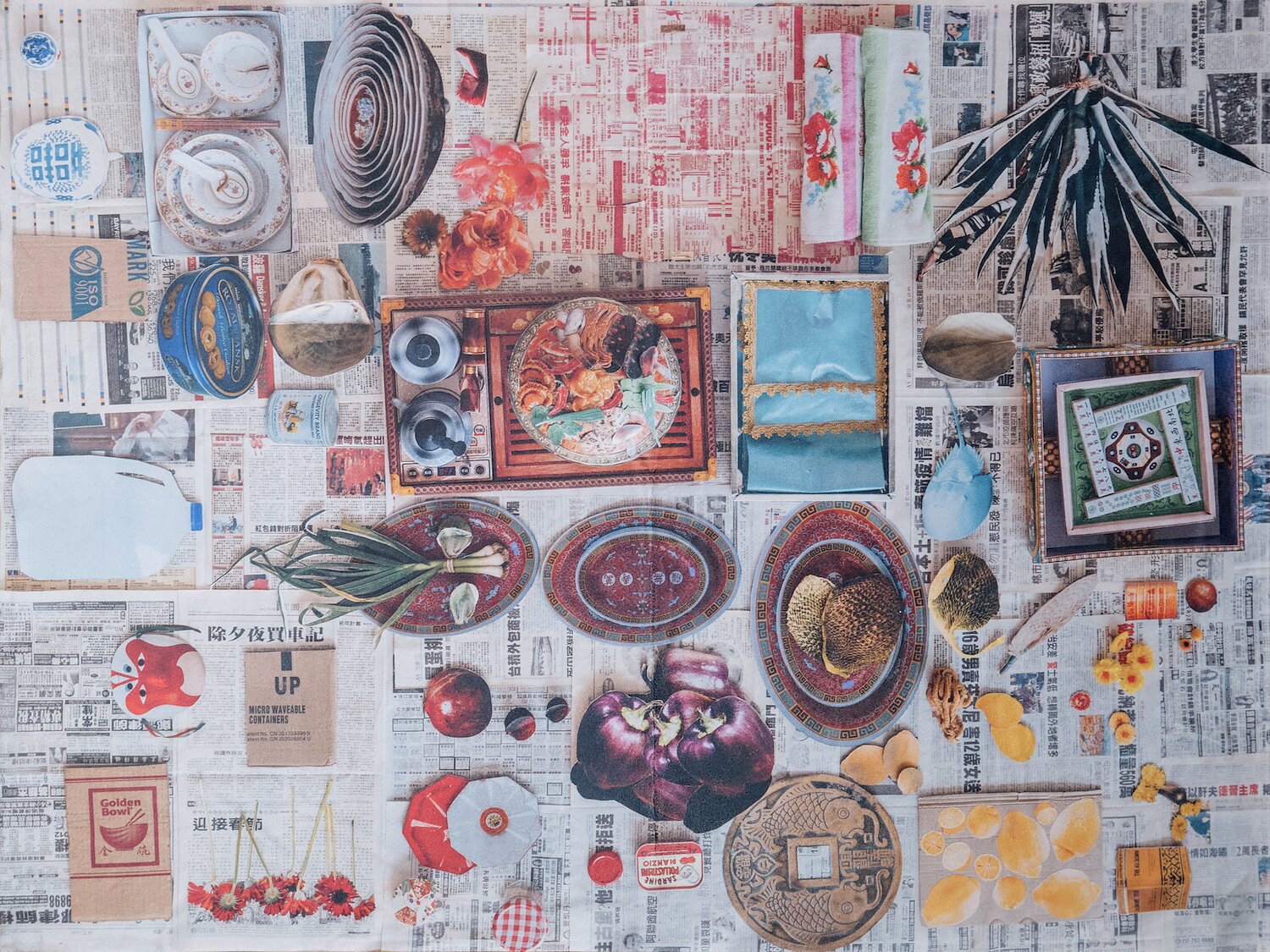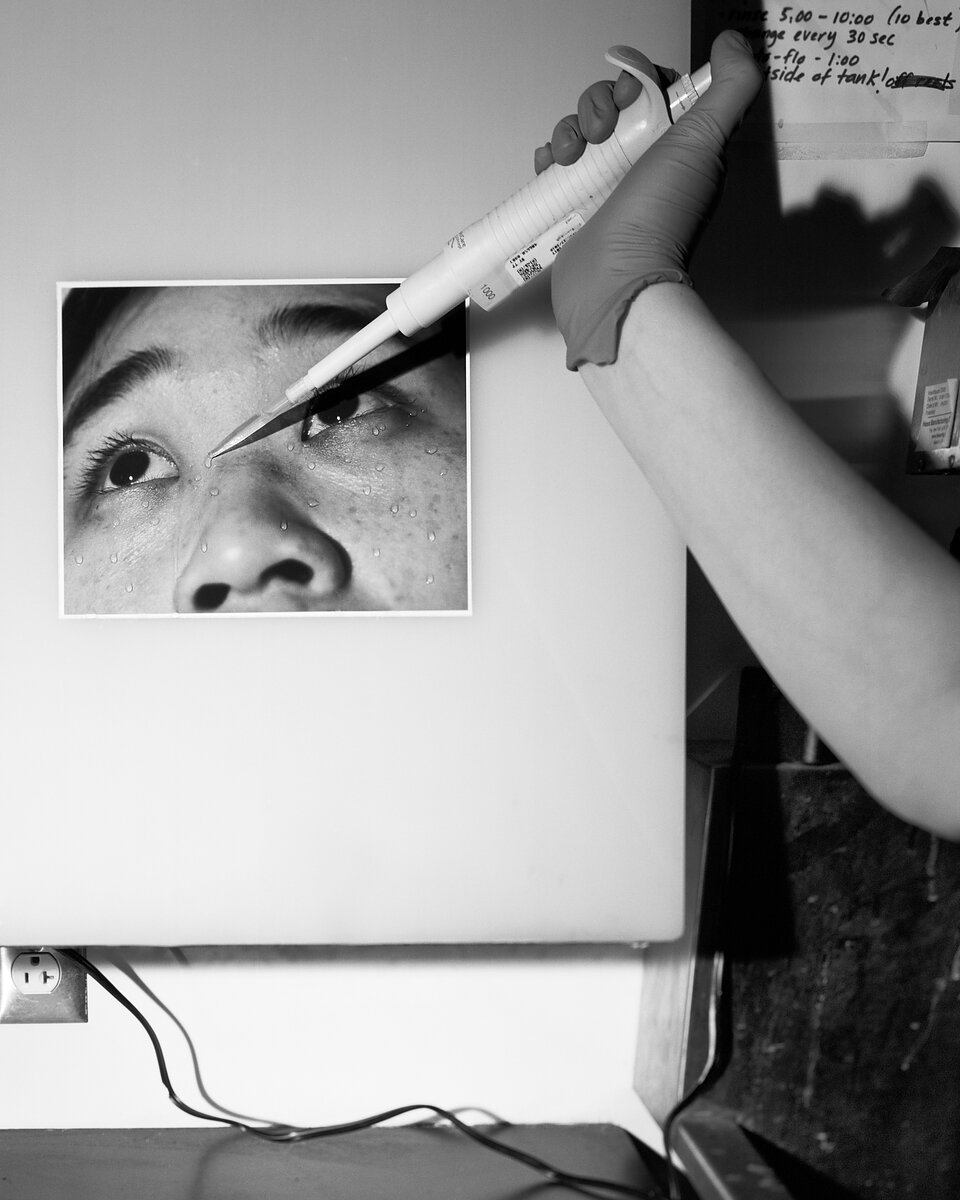Queer Chinese Diasporic Photographers Subverting Definition
Situated on the western edge of Manhattan facing the Hudson River, the white walls of Eli Klein Gallery are collaged in a myriad of subversive scenes—a fleshy grapefruit resting on white underwear, AI-generated playing cards of male torsos, a scaley bream straddling a sink faucet, a man in a Mao suit standing on the White House lawn. Existing between the intentionally candid and the intuitively staged, bodies, objects, and landscapes are positioned to transgress, whether obliquely or explicitly, traditional notions of plausibility.
These images make up the gallery’s current survey show, “(In) Directions: Queerness in Chinese Contemporary Photography.” The works of 21 artists are brought together by curators Phil Cai and Douglas Ray to disrupt any of the four defining terms in the show’s title–“Queerness,” “Chinese,” “Contemporary,” and “Photography”—as limitations that demand to be deliberately rejected in order to be fully defined.
The show’s curatorial premise follows the term “queer” beyond gender or sexuality. Instead, to be queer is to claim a position of the self in relation to structures of power and systematic frameworks of conformity–then tirelessly challenge and reform those positions. Queer, as a noun and a verb, moves and possesses, necessitating constant reinvention that stretches and contracts situationally. In states of continuous motion, the artists in this show negate set definitions and confined categories with vulnerability, wit, and nerve, taking up the challenge to live and create as fully and intuitively as possible, even when what is possible is painfully limiting.
Working with photo-based artists from mainland China, Hong Kong, and the greater Chinese diaspora in Southeast Asia and the West, “(In)directions” captures the contrasts and throughlines of censorship, oppression, and subjugation of queered thinking between the East and the West. For some artists, these forces are felt and reflected in their practice–the lived experience of fractured and fragmented identity, and the encompassing joy that might be found in places of belonging.
Chinese artist Guanyu Xu’s work challenges the ever-shifting positions of the self in the face of varying cultural ideologies and norms. Illumination (2014), from the series “One Land to Another” (one of his first projects in the US), confronts Xu’s internalized homophobia through the tender and violent act of staging and performing his death. “The work both deals with my internalized homophobia, but also a more general fear of how society could potentially treat me as a newcomer, a foreigner, exploring my identity and trying to engage with a community that doesn’t share my culture,” he said in a recent interview.
After six years in the US, Xu began his ongoing project, “Resident Aliens,” a series of photographs that capture intimately curated installations of other US immigrants’ interior spaces, collaged with old photographs and keepsakes, to examine their personal histories and experiences. Situated besides each other, works from each of these series represent, with arresting vulnerability, the evolution of an artist’s negotiations with power, care, and belonging.
Kha, known for his nostalgic and playful images that trace Asian American history in the American South, approaches his practice as a time-traveler and a ghost-hunter of his own memory. “Our past constantly reverberates in our present landscape,” said Kha. “These spaces are always collapsing onto themselves–and if something collapses there must be something in its nature that is inherently askew…or queer”.
Chinese artist Kanthy Peng further contributes to the conversation by considering the inherent queerness of the photographic medium as the potential to not only distort the parameters of past and present, but to portal us into the future.
As she explains, “Cameras have their own agency, contributing to the final image just as photographers and audiences do. Photographs contain emotions, often indescribable, that you never intended for them to have. They always surprise you. So I think cameras themselves can somehow capture a future that is not yet to be seen. This is its queerness.”
In Peng’s photo-based practice, she is constantly experimenting with the viewer’s processing of visual data. Staging, a central element in Peng’s work, interweaves documentary and construct, crafting scenes that unravel their illusions at the seams. While she initially attempted to distance herself from stereotypical labels of “gay art”, Peng now uses these notions to facilitate her artistic decisions.
“What really interests me is the definition of gay art…what makes a photograph look gay?,“ She asked. "Is it about the spotlight I’m using? The quality of film? What about images in black and white? Is it about how close I’m standing to my subject? What if I step back, create a more objective frame–would that make the woman look less gay?”
On the other hand, Chinese photographer Lin Zhipeng, also known as “223,” is utterly loyal to spontaneity, improvisation, and the present. Two of the most striking images in the show, Pumpkin is a Girl (2013) and When the Chemistry is Simplified (2021), capture the diversified possibilities of queerness as an embodied and inhabited space. 223’s camera acts as a highly personal third eye, documenting the experiences of his world, along with the worlds of those in his community.
“I want to catch these moments as a documentarian, and by doing that, find life in full,” 223 explained. Yet, his relentless dedication to record-keeping the impressions and sensory data of the “real” world produces images that feel intensely cinematic, revealing that the everyday is itself the most exhaustive and convincing fiction.
As a phenomenological show, “(In)directions: Queerness in Chinese Contemporary Photography” presents queerness as a strike against the conformed experience of perception, thought, desire, and memory. These artists prove that queerness is at once personal and shared, a perspective that can be understood by all who straddle the thresholds of different cultures and identities, who are forced to suppress one part of themselves at all times to be seen at all.
The strength of these works then lies in their honesty and ownership of the queered perspective, sometimes blatantly and other times indirectly, but always with piercing authenticity. Performing the simple, yet exceedingly difficult tasks of prioritizing intuition over definition, becoming over being, and abundance over finitude in both their work and in their bodies, the artists prove that the act of living is often itself the most radical form of resistance.
—Hannah Zhang is a freelance art and culture writer based in New York City. She is interested in intersections of art, literature, and fashion, especially seen through the perspectives of Asian American identities. Her writing can be found in Art Observed and Ocula Magazine.




